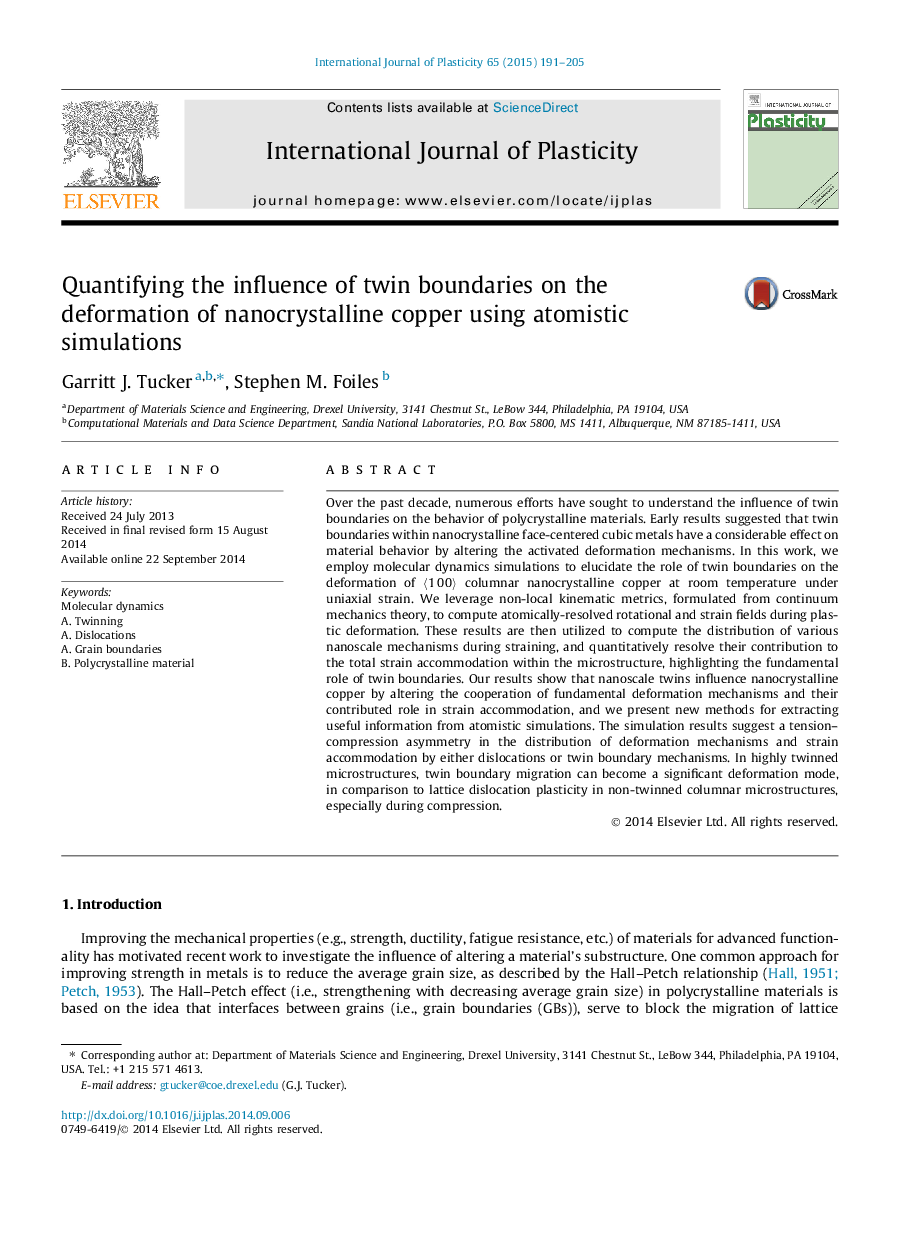| Article ID | Journal | Published Year | Pages | File Type |
|---|---|---|---|---|
| 786115 | International Journal of Plasticity | 2015 | 15 Pages |
•We use MD simulations and kinematic metrics to quantify the influence of TBs on NC Cu deformation.•Both TBs and the loading direction significantly affect the activated deformation mechanisms.•Dislocation plasticity is hindered in highly twinned structures and is more active under tension.•TB migration is a dominant deformation mode in highly twinned structures and under compression.•We quantitatively show how TBs alter deformation mechanism strain accommodation.
Over the past decade, numerous efforts have sought to understand the influence of twin boundaries on the behavior of polycrystalline materials. Early results suggested that twin boundaries within nanocrystalline face-centered cubic metals have a considerable effect on material behavior by altering the activated deformation mechanisms. In this work, we employ molecular dynamics simulations to elucidate the role of twin boundaries on the deformation of 〈100〉 columnar nanocrystalline copper at room temperature under uniaxial strain. We leverage non-local kinematic metrics, formulated from continuum mechanics theory, to compute atomically-resolved rotational and strain fields during plastic deformation. These results are then utilized to compute the distribution of various nanoscale mechanisms during straining, and quantitatively resolve their contribution to the total strain accommodation within the microstructure, highlighting the fundamental role of twin boundaries. Our results show that nanoscale twins influence nanocrystalline copper by altering the cooperation of fundamental deformation mechanisms and their contributed role in strain accommodation, and we present new methods for extracting useful information from atomistic simulations. The simulation results suggest a tension–compression asymmetry in the distribution of deformation mechanisms and strain accommodation by either dislocations or twin boundary mechanisms. In highly twinned microstructures, twin boundary migration can become a significant deformation mode, in comparison to lattice dislocation plasticity in non-twinned columnar microstructures, especially during compression.
